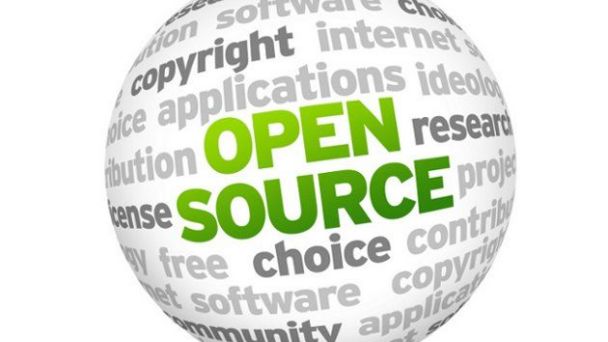This article is written by Abhimanyu Yadav, pursuing a Certificate Course in Intellectual Property Law and Prosecution, from LawSikho.
Table of Contents
Introduction to open source software
Open-source refers to software that’s been released under open-source licenses. Open-source Licenses like other licenses grant certain intellectual rights to the user’s who are subject to the license. Rights such as the right to use, reproduce and to create derivative works. E.g. Borrowing source codes and writing your own program and then integrating it.
Every software is created by source code and these are subject to modification and changes with the permission of the developer. Open-source means inviting others to contribute to one’s work and improve upon it but still having control over how it is done and who can alter it. This is done mainly to improve the software. This protects the Intellectual property of the creator. And different businesses manage open-source differently. Some businesses touch open-source in fundamental ways. The question which arises now is if you want to write a source code and give away information for free, How do you get paid? I will explain in the article how this can be done and how copyright can be used to safeguard source code and how to monetise from open-source software.
When we open-source software the source code of such software is open and anybody can change it to create a different software or to improve it if there are any errors. For example- If x has copyright over software for Aircraft navigation, and x open-sources the same. Y creates derivatives and uses the base and changes the source code so that he produces software for road navigation or ship navigation. This invites improvement in the software. So if a person has codes to make software better he can do so.
How to get paid from open-source software
One of the business models to get paid from open-source software is by taking an open-source software which is not good and by making it better and not sharing the enhancements. This would act as your proprietary product. Creating software and making the last one available for free and the latest one available at a price is another way to get paid from Open-source Software. This is also known as version lagging. The third model is to create a service company and give the software for free and charge for the services. Charge for consulting and support concerning the software.
Another way to create a business is by making a piece of software which would become better if combined with the other people’s software. For example- If someone has built a web server one can offer them a software in combination which would make its management services better. One can also offer this software free of cost only in exchange for the source code of the other parties software. This is known as dual licensing and the developer exchange each other’s Intellectual Property without paying any amount of money.
Evaluation of open-source licenses
Open-source Licenses allows the software to be freely used, modified and shared while establishing guidelines on the ways the same can be done. One non-profit organisation which helps in evaluation open-source licenses is “Open-source Initiative,” it is an organisation which evaluates licences and works to raise awareness and adoption of open-source licenses. Some of the criteria open-source initiatives take into consideration while evaluation is:
- The License must be free to be used.
- It must have a clause which provides access to the source code.
- It must allow for the creation of altered work or derivatives.
One common thing in an organisation which deals in open-source licenses is that they make it mandatory to provide authorship to the originator of the work. MIT License is a popular Open-source License which grants a person to use, change, collaborate, sublicense only on the condition that the user further allows the same while creating derivatives, additions and distributions. MIT License is a popular open-source license. The following clause gives us a clear picture of the terms and conditions which the user has to abide by when using the MIT License.
“Permission is hereby granted, free of charge, to any person obtaining a copy of this software and associated documentation files (the “Software”), to deal in the Software without restriction, including without limitation the rights to use, copy, modify, merge, publish, distribute, sublicense, and/or sell copies of the Software, and to permit persons to whom the Software is furnished to do so, subject to the following conditions:
The above copyright notice and this permission notice shall be included in all copies or substantial portions of the Software.”
Two types of License types
Copyleft– If we have an open-source software licence and we apply copyleft to it, the condition one can create derivative or alterations of the work is that the person creating derivative or alterations also has to open-source his creation. This is mainly done to promote open-source licenses. While on the other hand if the code is put in the package of distribution, the package is also supposed to use the same type of license, this is also known as Strong- Copyleft license. Copyleft is used on a condition that any derivative, addition or distribution uses the same license.
Permissive License– In case of Permissive License, derivatives additions and distribution do not necessarily have to use an open-source license. E.g. Somebody can take the software and put it in a package of distribution and close source it and copyright it. They can also sell the same. This is one of the ways to get paid by using an Open-source License.
Challenges of open-source network
There are several challenges attached to Open-source Network like:
- Some of the applications may be difficult to use and can affect the productivity of the user.
- Open-source software licenses contain limited warranty with no liability protection. Users are also not protected from infringement.
- The software may have hidden charges which the user may realise later.
- An Open-source Software may not run with the user’s Software as well as the proprietary driver.
How to decide what type of open-source license to use
What Licenses are already in use in one’s software?
It is important to know which license one is using because it sets a guideline which the one has to follow. E.g If one is using Strong-copyleft license that means the one himself has to use a Strong-copyleft license. If it’s a permissive license then one can keep his software license per his preference.
What are the terms of service where my software is hosted?
Terms and service are important because one will have to follow the conditions laid down while making a codebase. E.g. the terms and condition lays down that the code base must make derivatives, then only if the user abides by these conditions would he be able to use the license.
Do you want derivatives, additions and distributions to use the same license as the Software?
If one wants derivatives, additions and distributions to use the same license as used in the software then one has to copyleft his license and if not then permissive license.
Can others use my software in their own proprietary software?
If one wants this then a Weak-Copyleft license would serve the purpose, if not, then a Strong-Copyleft. If one wants everyone to follow the same guideline which one is following. Then one wants a Strong-copyleft license.
Homework recommended before choosing a license
It is important to take into consideration the review of OSI to use the license, which is reviewed on opensource.org/licenses. The OSI makes sure that the copyright owner/creator/user of work is protected. It is important to read the license before one uses it. tldrlegal.com is a website which explains the protection and the limitation of the user for the creation of work.
Conclusion
In conclusion, an Open-source License has two consequences one being Practical and the other being legal. The material that is released under these licenses is freely available to anyone who wants to use it. Open-source software is used as a source of improvement over something which is in the public domain. On the other hand, Legal being all the improved versions are subject to patent protection. An open-source license is not protected from infringement and can cost a user if it is not chosen wisely. A user can modify it and restrict the enhancements or can get paid for the enhancements. Further, it is important to know the license which a person is using in his software to know the guidelines he has to follow and the guideline he has to set for his work.
References
- https://opensource.org
- Understanding Open-source and Free Software Licensing by Andrew M. St. Laurant
- https://www.nibusinessinfo.co.uk/content/disadvantages-open-source-software
Students of Lawsikho courses regularly produce writing assignments and work on practical exercises as a part of their coursework and develop themselves in real-life practical skill.
LawSikho has created a telegram group for exchanging legal knowledge, referrals and various opportunities. You can click on this link and join:
 Serato DJ Crack 2025Serato DJ PRO Crack
Serato DJ Crack 2025Serato DJ PRO Crack











 Allow notifications
Allow notifications



